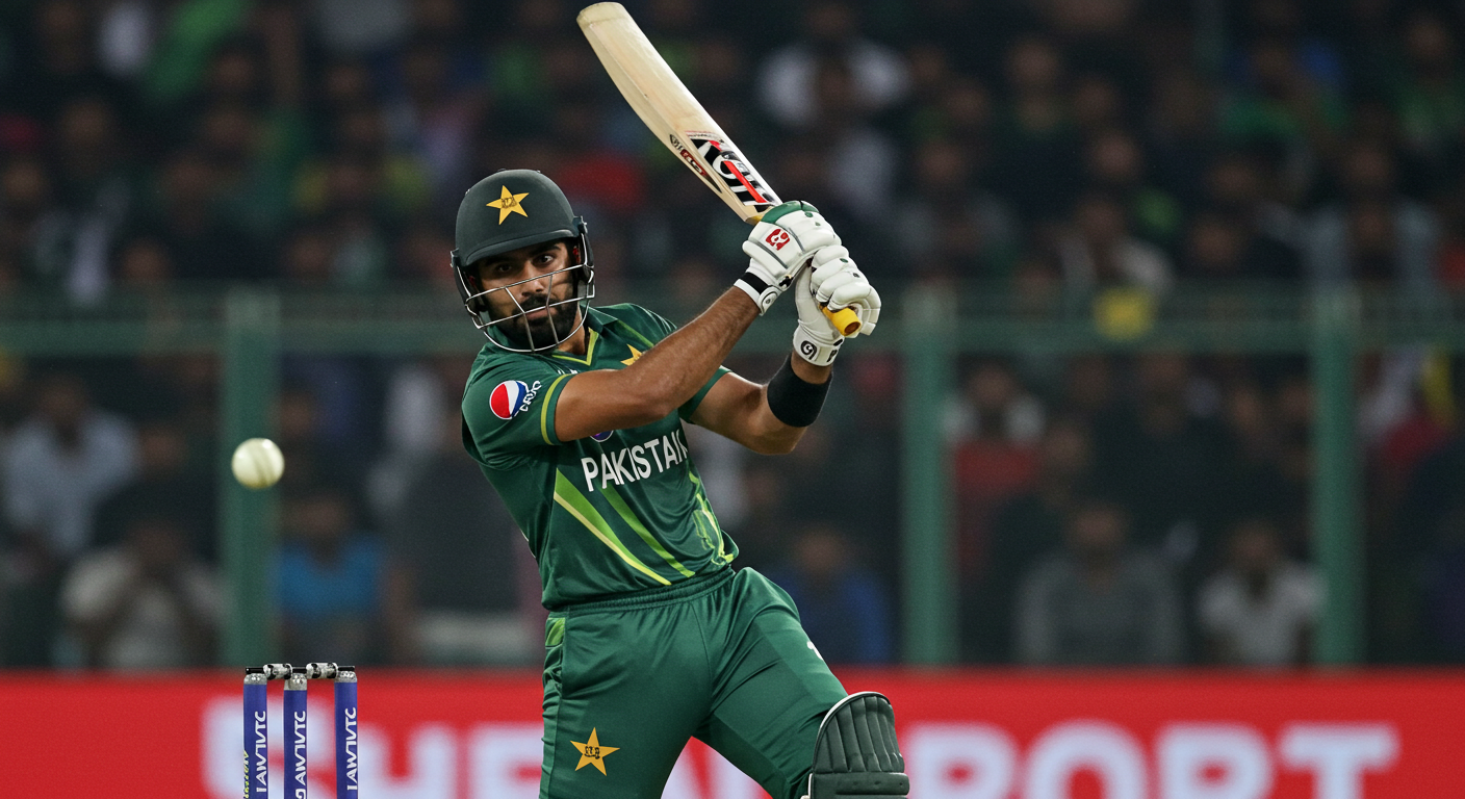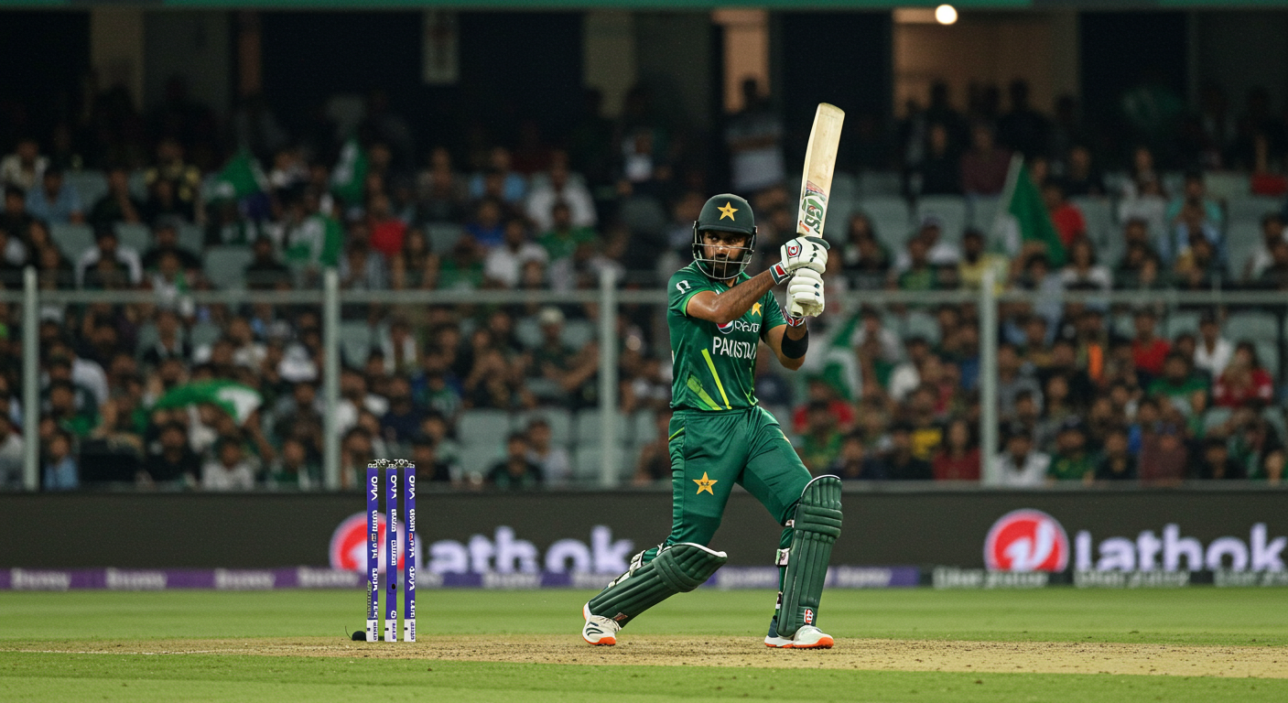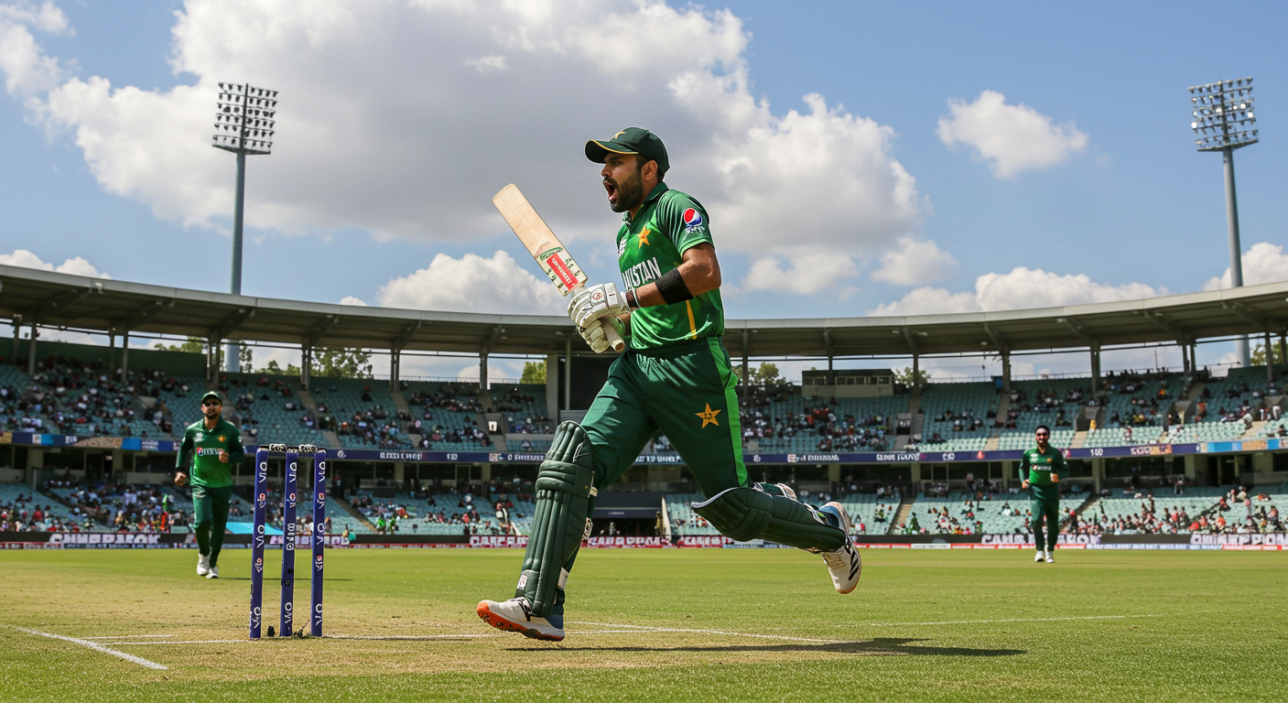
Babar Azam’s Technique and Temperament in a Power-Hitting Era
Babar Azam doesn’t play like the era demands. And that’s what makes him stand out. In a time when cricket’s shortest formats are defined by bat speed, slog sweeps, and improvised ramps, Babar stands still, balanced — and then drives. Not with brute force, but with intent.
His timing isn’t flashy. It’s surgical. He doesn’t muscle the ball over midwicket — he threads it through extra cover. His sixes are rare but deliberate. His boundaries don’t explode — they whisper.
From the moment he emerged in the Pakistan setup in 2015, comparisons came fast. Too fast. To Kohli, to Root, to Williamson. But Babar didn’t chase the comparisons. He chased his own shape — wrists in control, head still, the crease his canvas.
There’s a stillness to his presence that disarms. He doesn’t talk much. Doesn’t react loudly. But put a ball in the right zone and the response is precise, repeatable, and almost impossible to counter.
He’s not here to dominate an era through power. He’s here to endure it — through method, through elegance, and through a temperament that slows the game just enough to play it on his terms.
Technique That Refuses to Modernise — and Doesn’t Need To

There’s a moment, just after release, when Babar Azam decides. Not based on a guess, but on geometry. Length, line, field. He doesn’t premeditate — he reads. And once he does, the bat comes down like a ruler, straight and late, slicing through doubt.
In T20s, that approach seems almost out of sync. The world wants 200+ scores. Batsmen are evaluated on strike rate, not survival. And yet, Babar survives. Not with blind acceleration, but with soft hands, gap-finding, and composure.
His cover drive is not just an aesthetic — it’s a blueprint. His grip, tight at the top, loosens just enough through the stroke to let the ball roll without spin. No violence. Just rhythm.
Where others panic in the powerplay, he paces. Where others seek boundaries, he builds patterns. That doesn’t always make him a fan favourite in the T20 leagues. But in ODIs, in Tests, and in tense chases, it makes him indispensable.
Babar’s technique hasn’t kept up with the era. It hasn’t needed to. Because when he’s in flow, it’s not just effective — it’s stubbornly beautiful. And in cricket, that kind of beauty still scores runs.
The ODI Constant in a Game of Flux
If T20 cricket leaves you unconvinced of Babar Azam’s dominance, ODIs tell a different story entirely. In the 50-over format, he isn’t just good — he’s clinical. There’s a rhythm to his one-day batting that feels more composed than contemporary. He doesn’t muscle the ball; he manufactures it — stroke by stroke, phase by phase.
Babar’s ODI record isn’t built on one standout year. It’s built on relentless output. He averages over 50 not by blasting attacks, but by dissecting them. His hundreds often come quietly. You look up in the 35th over and he’s on 92, having worked his way through spin, seam, and silence.
What separates Babar in ODIs is his reading of tempo. He knows when to go under the radar, when to shift gears without showing it. He doesn’t follow the trends — he bends them just enough to stay in control. Against pace, he waits. Against spin, he uses depth. And in a chase, he plays like the scoreboard belongs to him.
There are more powerful hitters. There are flashier players. But in a format that still rewards structure and discipline, Babar remains a curator of innings — and a reminder that run-making is still an art.
The Captaincy Burden That Doesn’t Fit

It’s hard to talk about Babar Azam without talking about captaincy — and harder still to talk about Pakistan cricket without acknowledging that leadership comes with chaos built in. Babar’s appointment as captain across formats was meant to be stabilising. A modern player with old-school technique, soft-spoken, scandal-free — finally, a leader to match the expectations.
But the role hasn’t sat lightly. His decisions are second-guessed. His body language is endlessly analysed. When Pakistan win, they do so in spite of him. When they lose, he’s held solely responsible. In post-match interviews, he smiles through tension, deflects blame, speaks carefully. Too carefully, critics say.
There’s a discomfort in how the captaincy wraps around his otherwise assured presence. On the field, he controls the bat with clinical serenity. Off it, he seems trapped in a job that demands a different personality — one louder, more political, more combustible.
And yet, he endures. Leads by consistency, not charisma. He doesn’t yell, doesn’t gesture wildly. He just plays. But for a country obsessed with mercurial brilliance, that restraint can feel like absence.
Babar Azam isn’t the problem. But Pakistan’s inability to separate form from leadership might be. He wasn’t born to be a showman. He was born to bat. And sometimes, that should be enough.
The Global Spotlight and the Quiet Brand
Babar Azam is a global star — and yet, he isn’t treated like one. Not in the way the cricketing world elevates Kohli, or the IPL markets its heavyweights. His image isn’t built on charisma or theatrics. It’s built on what he does once the helmet comes on.
He doesn’t seek the camera. He doesn’t choreograph celebrations. But the weight of his presence is growing — and with it, the brand. Slowly, quietly, Babar is becoming Pakistan’s most recognisable sporting face since Wasim and Waqar hung up their boots.
But global fame requires more than cover drives. It asks for presence — press conferences, endorsements, narrative control. These aren’t natural instincts for Babar. He appears in commercials, yes. But he still speaks like someone who’s more comfortable at the crease than in front of a lens.
That contrast is part of the tension. He’s a modern great playing with the temperament of a 90s technician. A brand ambassador with no appetite for bravado. It makes him unique — and a little difficult to market in a world that demands performance on and off the pitch.
But maybe that’s what sets him apart. While others brand themselves into stories, Babar lets his game build his myth. And over time, that’s the brand that sticks.
PSL and the Domestic Weight of Expectation

In Pakistan, cricket isn’t just a sport. It’s a referendum on identity, temperament, politics — sometimes all at once. And no domestic tournament magnifies that like the Pakistan Super League (PSL).
For Babar, the PSL has become a paradox. He is, without doubt, one of its most consistent performers. His numbers are stellar, his captaincy stats credible, and his reliability unmatched. But in a tournament that feeds on spectacle, he sometimes feels out of step with what the crowd expects.
He doesn’t go ballistic in the powerplay. He doesn’t hit sixes off the first ball. He builds. He guides. He anchors. And in T20s, anchoring is a role that’s constantly under scrutiny — especially when the team loses.
The result? A bizarre national conversation where Pakistan’s best batter is also its most questioned one.
At Karachi Kings, at Peshawar Zalmi — wherever he’s gone — the script repeats: Babar scores, team struggles, critics circle. His role becomes a lightning rod for debate about tempo, intent, and the ever-present pressure of proving your worth in a country that never forgets a failure.
But through it all, he remains unchanged. Same footwork. Same tempo. Same refusal to let noise dictate his game. It might not always win him headlines. But it’s the same temperament that’s kept him Pakistan’s most dependable cricketer for nearly a decade.
Not Built for Hype — Built for Longevity
Cricket today rewards spectacle. A 30 off 10 balls is celebrated more loudly than a composed century. Players are assessed by strike rate before average. In that system, Babar Azam should be overlooked. But he isn’t. Because while others chase noise, Babar builds legacy.
He’s not here for moments. He’s here for matches. Series. Years. While power-hitters burn bright and fade, Babar’s game is rooted in something rarer — repeatability. There’s no part of his batting that relies on luck or timing alone. Every movement, every stroke, is drilled. Not dramatic — but durable.
What Babar brings to the modern game is structure. A style that slows things down without stalling them. A tempo that others can bat around. He doesn’t need to dominate every innings — he just needs to anchor it. And that’s exactly what makes him so dangerous.
His biggest strength isn’t flair. It’s resilience. When others falter under pressure, he’s still playing late, still threading singles, still building. That’s why he’s managed to stay consistent across formats in a country where form is volatile and faith in players is even more so.
Babar’s greatness may not be viral. But it will be visible — year after year, score after score, moment after moment, when steadiness proves more valuable than spectacle.
The Legacy of Restraint

Every era has its language. This one speaks in sixes, in innovation, in explosion. But Babar Azam’s cricket speaks in another dialect — restraint. That isn’t a limitation. It’s a choice. And increasingly, it’s a rarity.
He’s been Pakistan’s top batter for the better part of a decade without ever needing to reinvent himself to fit into what’s popular. His cover drive remains classical. His stance remains compact. His temperament remains still. And yet, he scores in every condition, against every opponent, and in every format.
In a world that moves too fast, he reminds us of the strength in stillness. Of playing the ball on merit. Of innings that unfold rather than erupt. It’s not passive — it’s calculated. It’s not outdated — it’s timeless.
And that may well be Babar’s legacy. Not a highlight reel of switch hits and boundary carnage, but the memory of innings that felt composed in moments where everything else was cracking. His restraint isn’t just personality — it’s skill, weaponised.
He will be remembered not because he shouted the loudest, but because he lasted the longest. Not because he followed the trend, but because he was too good to need to. That’s how grace becomes legend.
Conclusion: Why Babar Azam Matters in a Power-Hitting Era

In a generation defined by acceleration, Babar Azam represents the pause. The space between overs. The discipline between shots. The ability to hold an innings together not by force, but by feel.
He plays like a man untouched by modern panic — no frantic power-hitting, no over-innovation. Just a clear head, a still base, and the trust that timing will do what brute force often can’t. In doing so, he has carved a niche for himself not just in Pakistan cricket, but in the global conversation.
He is not the next Kohli, the next Root, or the next anyone. He is the first Babar — and that is increasingly enough.
His technique is a statement. His temperament is the echo. And in a world where style is currency, he’s quietly built a career on substance.
He doesn’t just belong to this era. He reminds it of what came before — and why that still matters.





